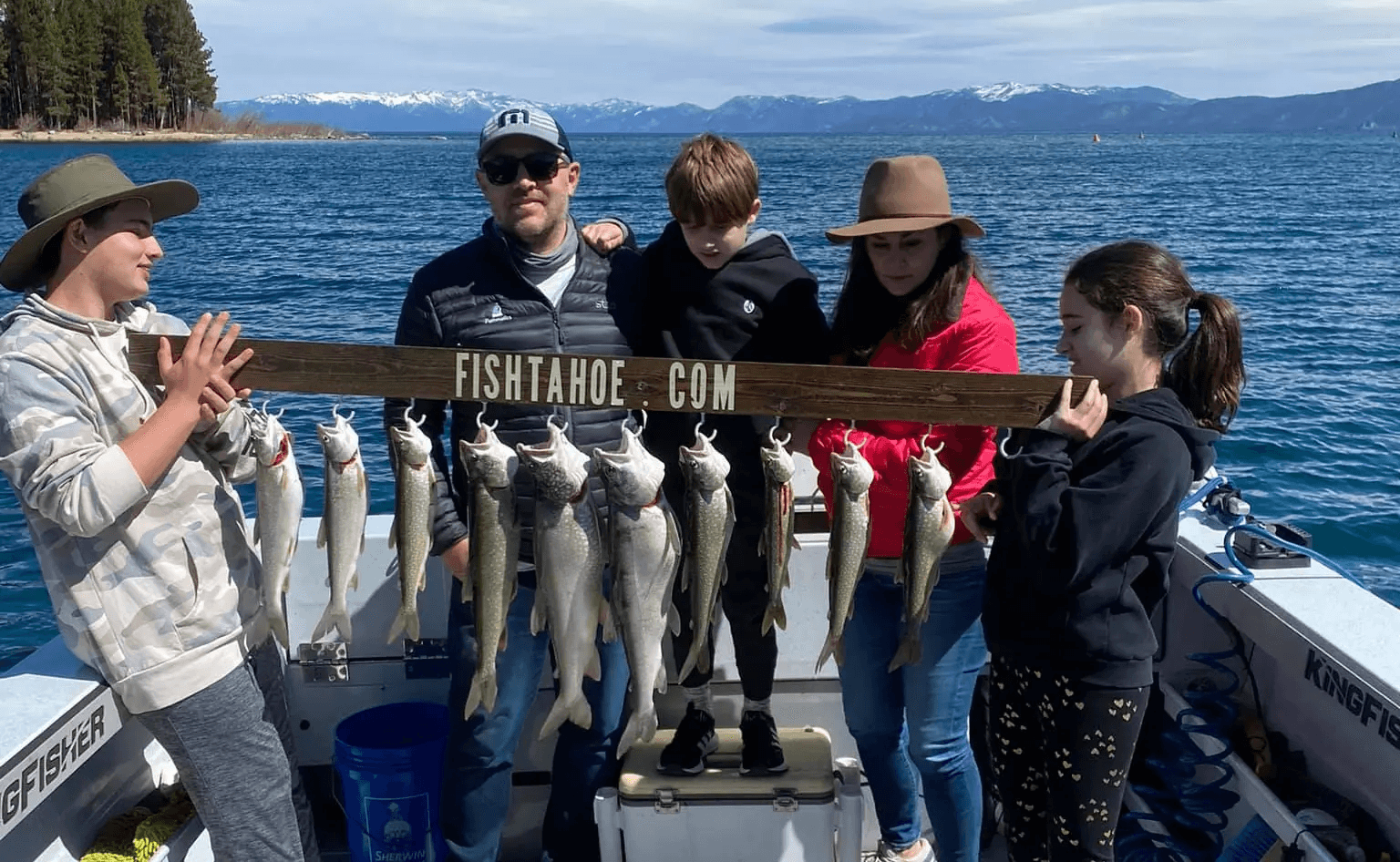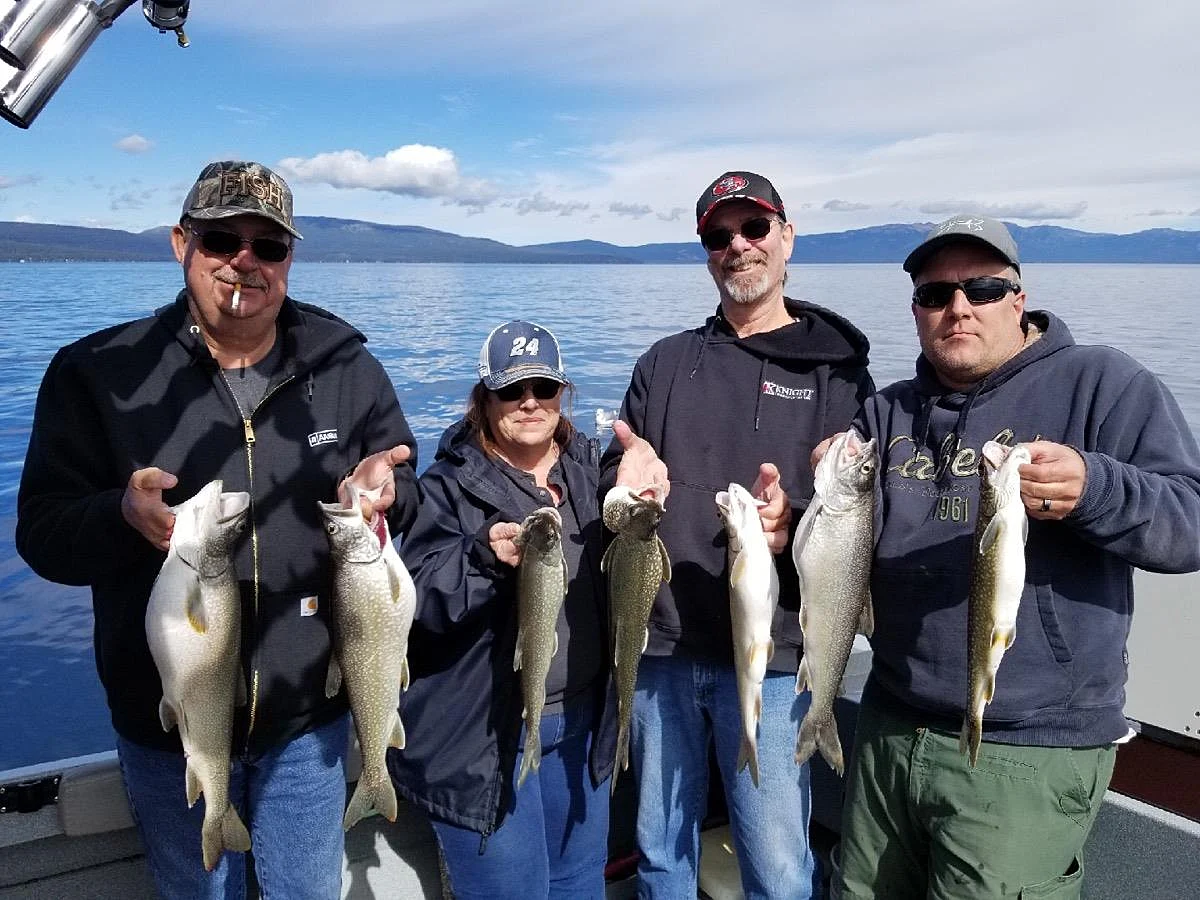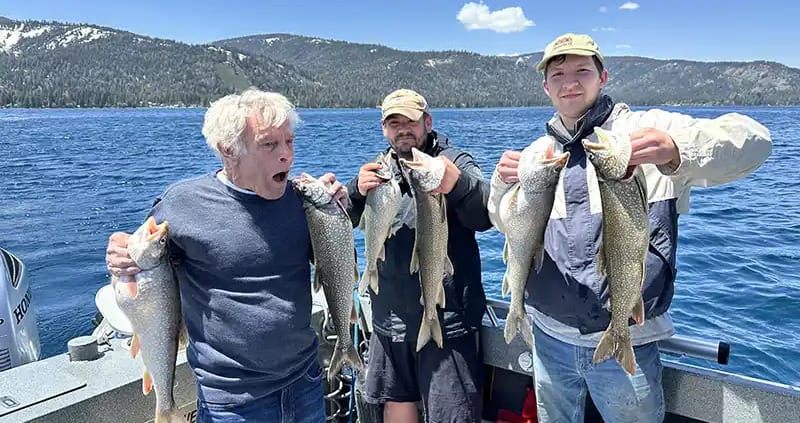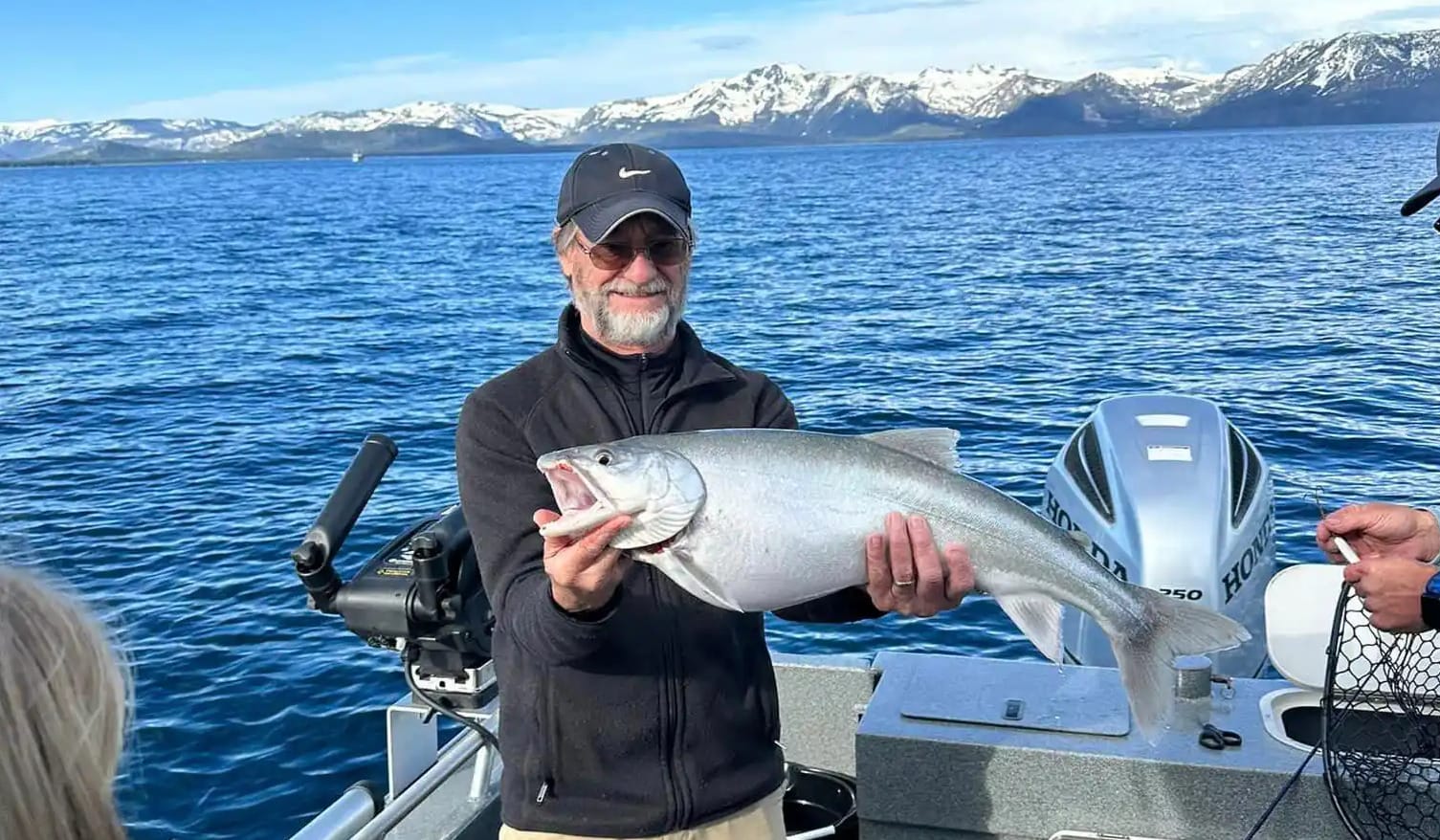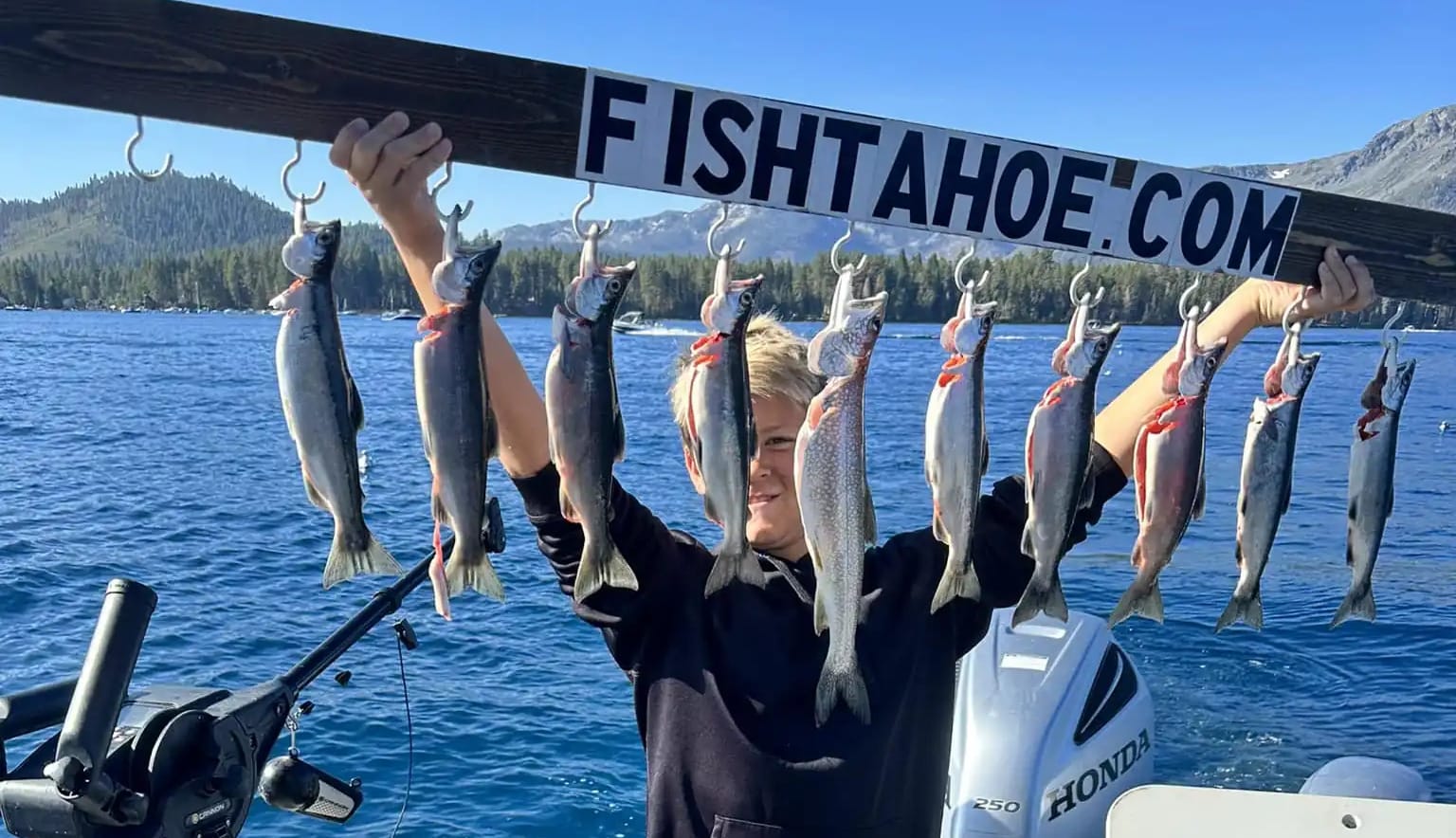Lake Tahoe Kayak Fishing
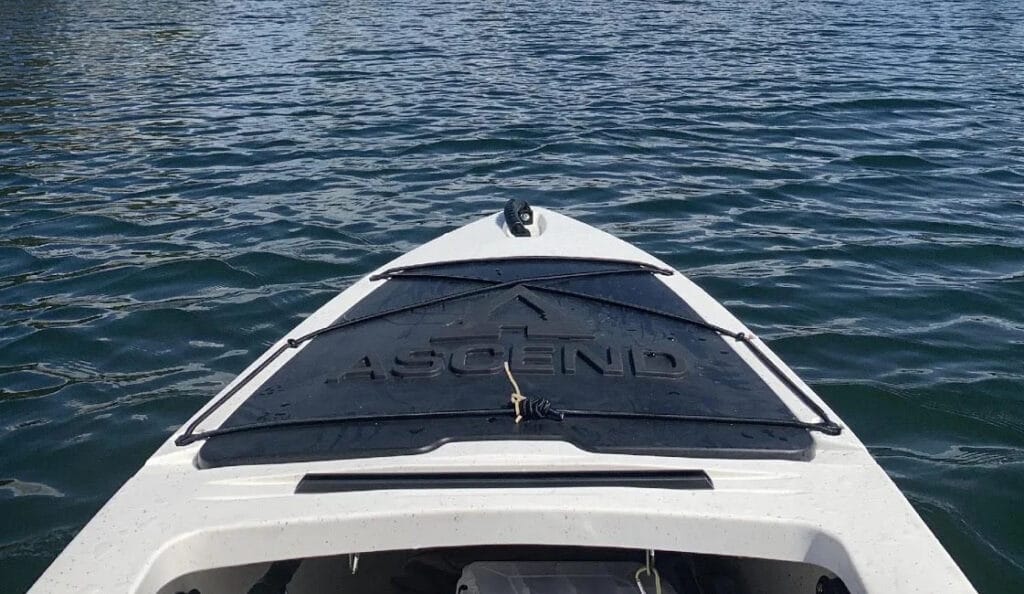
Kayak fishing on Lake Tahoe is absolutely thrilling. When you’re hooked into a double-digit Lake Trout and it starts towing your kayak around, your heart will be pounding. But that rush comes with real risks. If you’re thinking about getting into kayak fishing on Tahoe, this is a solid place to start and prepare.
The best advice I can give? Hire a fishing guide. Spend a day with us at Mile High Fishing to get your bearings. Tahoe is massive and has countless fishable zones. Without guidance, you’ll feel lost. Fishing from a boat is already a challenge—doing it from a kayak adds even more complexity. Most anglers who bring their own boats end up fishing with us first after struggling for a few days without results. Spend one day with someone who fishes this lake for a living. Ask questions. Pay attention.
Once you understand how to fish the lake, the next priority is safety. Tahoe is deep, cold, and huge. That combination makes awareness critical. Always know how far you are from shore. If you can’t comfortably swim back without a life vest, you’re too far out. The good news is that you can find productive water within a few hundred yards of shore.
Summer adds another layer of risk with heavy boat traffic. Avoid blending in—don’t wear blue on a blue kayak. Visibility is key. Wear a bright vest, shirt, or jacket. Another big danger is the weather. Tahoe is unpredictable. If the water or sky looks sketchy, skip it and grab breakfast instead. Pay close attention to the wind. The lake stretches over 22 miles long, and if you get caught in the middle during a blow-up, it can get dangerous fast.
Water temperature is another serious factor. Tahoe is an alpine lake and it stays cold all year. If you’re heading out in colder seasons, consider what would happen if you flipped. Safety isn’t just a checklist—it’s the most important part of every outing on this lake.
If you’ve already got a full kayak fishing setup with a fish finder, you’ve got a big advantage. But even with basic gear, there are great options. One of the most productive techniques from mid-summer to fall is fishing for Kokanee Salmon.
The setup can seem a little complicated, but catching the fish isn’t hard. Use a flexible rod rigged with leadcore line. Kokanee have soft mouths, so you want something that won’t rip the hook out. Tie on 10-pound test off the leadcore, then add silver flashers—Model T’s or Cow Bells work fine. Red beads are a bonus. From there, run a 12- to 36-inch leader to a Wedding Ring lure. Start around 24 inches and adjust depending on what works.
Don’t forget the corn. Tip the Wedding Ring with a single kernel. Cured corn is great, but some old timers still swear by canned corn. Fish the southwest side of the lake between Camp Richardson and Cascade Creek. The Kokanee usually suspend between 60 and 90 feet. Let out enough leadcore to hit that depth and cruise at about 2 mph. Sometimes they’re over 120 feet. Use nearby boats as a reference to dial in the depth.
If you don’t have leadcore or a finder, try top-lining the shallows. This works best in spring, fall, and winter, but you can still get fish in summer. Troll 200 feet of fluorocarbon behind you with a diving lure like a Rapala. You want something that gets down 8 to 15 feet. Focus on shoreline areas with good structure and 10 to 30 feet of depth. Vary your speed until you figure out what’s working that day. You can catch Browns, Rainbows, and even Mackinaw this way.
One of the most effective and hands-on ways to catch Lake Trout from a kayak is jigging. This works best if your kayak has a depth finder. Use braided mainline with a 20- to 30-foot 12-pound fluorocarbon leader. Go with a 3- to 4-ounce jig. CR Jig Co. makes solid options, and they’re available at our bait shop in South Lake Tahoe. Crippled Herring jigs also work well. Use what you’re confident in, but make sure it’s heavy enough to get down fast.
Always tip your jig with a minnow. You can hook it through the head with a treble or thread it on a bait hook. Either way, you’ll increase your odds. Focus on the 120- to 180-foot range. Once you mark fish, drop straight down and start working the jig vertically. It’s an active, rewarding way to fish and usually produces results.
Another good tactic is drifting a live minnow on a simple line. It’s low effort but effective when fish are holding tight to structure or moving slow.
Kayak fishing Tahoe is not for the unprepared—but if you’re dialed in, it can be one of the most exciting ways to fish this lake. Be safe, stay visible, and fish smart. The rewards are worth the work.
